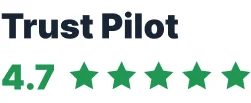THE RELATIONSHIP BETWEEN SEO AND CONTENT MARKETING CAN ALWAYS FEEL
A BIT COMPLICATED – SPECIFICALLY IN HOW THE TWO FIT TOGETHER.
- Do they get along?
- Are they at odds with each other?
- If so, is it possible to ever make them work together?
If you’re trying to grow your qualified search traffic, you have to combine your SEO efforts with engaging content.One way to look at the relationship between SEO and Content Marketing is the perspective of SEO making requests of content marketing (although their synergy isn’t as aggressive as it sounds).
Let’s look at the three essential ingredients SEO requires – keywords, backlinks, and a technical site audit – and how SEO and content work together to help you achieve your digital marketing goals.
1. KEYWORDS CAN HELP YOU GENERATE CONTENT IDEAS FOR SEO AND CONTENT MARKETING.
There is no such thing as SEO without keywords, and the most astute content marketers understand that the best content helps your rank for the terms that are most related to what your consumers are already searching for – which is why every effective content strategy starts with keyword research.
A comprehensive keyword research session starts with some simple brainstorming. Think about the main goals of your site and jot down some keywords. From there, expand this list with the help of keyword tools.
Below are two ways you can identify keywords beyond those you currently rank for:
GOOGLE AUTOCOMPLETE AND RELATED SEARCHES:
There’s no better way to step inside the mind of what your consumers are searching for than through Google. Let’s say you wanted to start a website dedicated to cheeseburgers. “The best cheeseburger” is a query that your target audience is already likely using, but when you enter it into Google, you’ll discover a list of potential long-tail keywords (see below).
From there, scroll down and check the related searches for an additional list of relevant keywords (see below).Paid tools like SEMrush: Another option is to look at potential keywords through the lens of how competitive the term is via SEMrush. On the platform’s main dashboard, they have a section that offers related keywords, which is another great resource to identify terms that your site might not already rank for (see below).
Once you’ve got a set list of keywords, think about how you can use them effectively beyond just technical means, and beyond meta descriptions and title tags. Here are a few other ways you can use your keyword research:
Blog posts: Use your list of keywords to help you come up with new blog topics. Referring back to the cheeseburger example, you can produce a blog post where you sample multiple burgers from fast food chains.
Static and dynamic assets: Keywords can be a jumping-off point for more creative projects. In the case of “best cheeseburger toppings,” you could create an interactive asset that lets users build their own burgers.
2. A DIVERSE BACKLINK PORTFOLIO IS THE DIRECT RESULT OF ENGAGING CONTENT
Google uses links to measure the relevance, authority, and trust of websites. So producing lots of linkable content will help boost your rankings. So what’s the secret to linkable content? An analysis of more than 300 content marketing campaigns by Moz and Fractal (disclosure: my employer) revealed there are four key ingredients to highly shareable content.
Every online marketer worth their salt knows what a backlink is.
3. WEBSITE MAINTENANCE
One of the main factors to avoid your SEO results dropping is to keep all your software up to date. Any errors or outdated software can cause your ranking to drop. Here at CKwebsitedesign we also provide professional and reliable website maintenance for businesses big and small.



































































































































